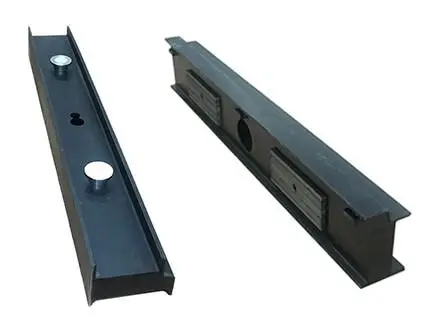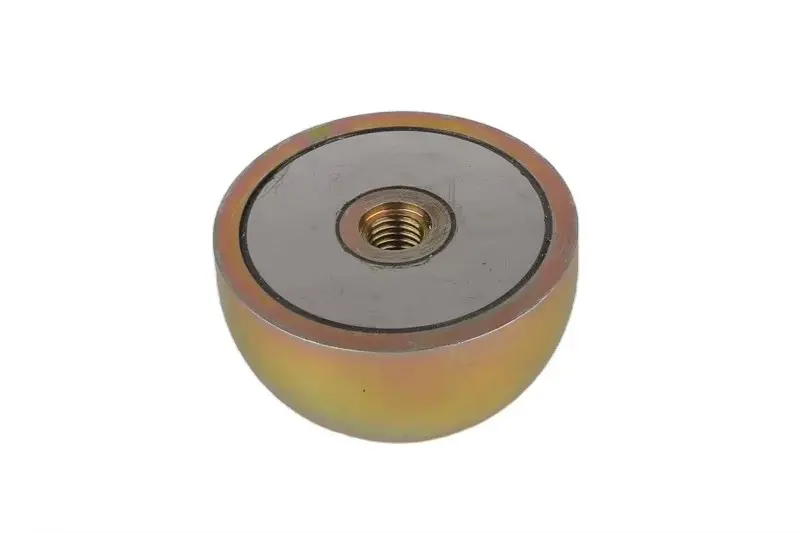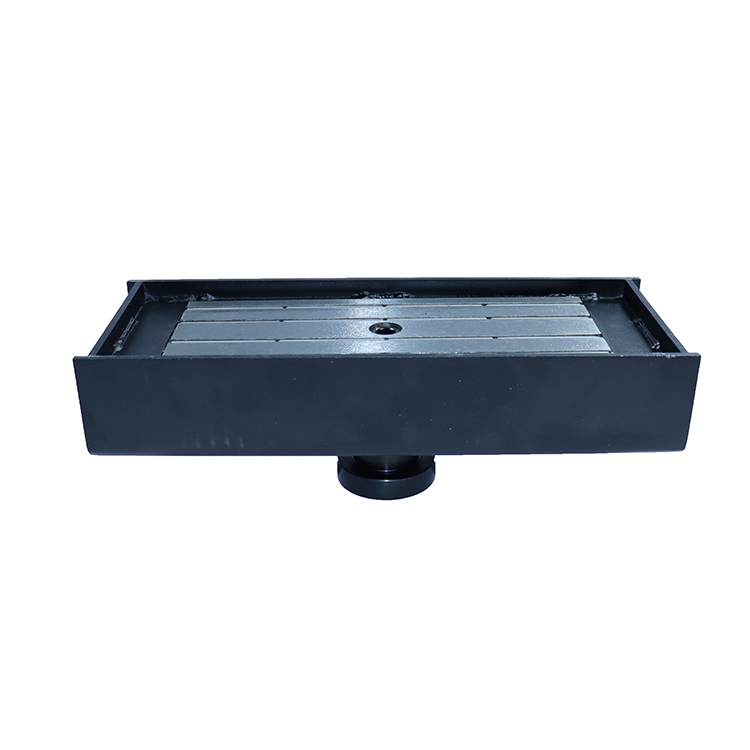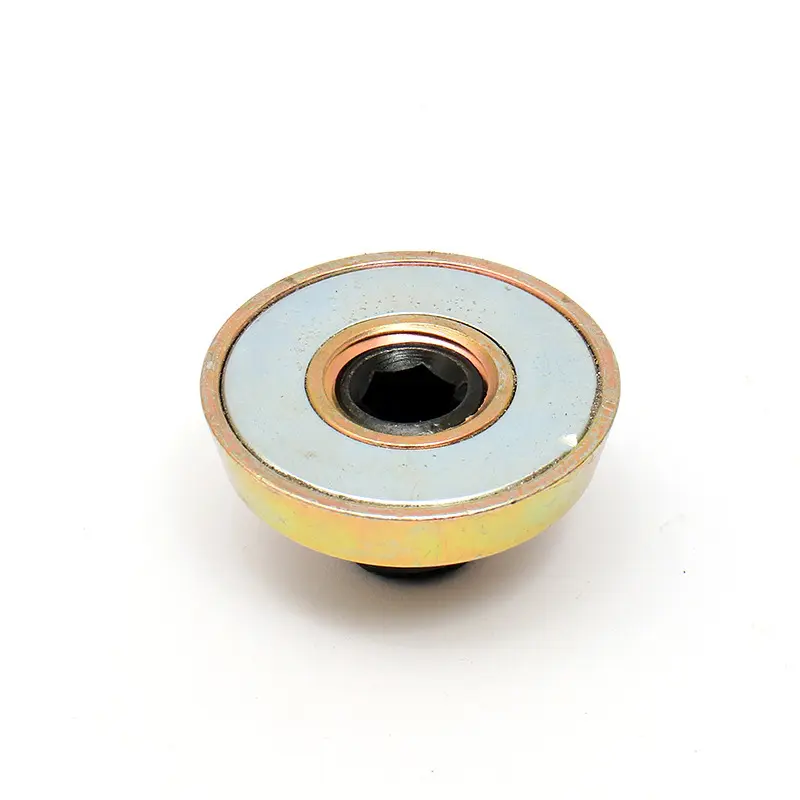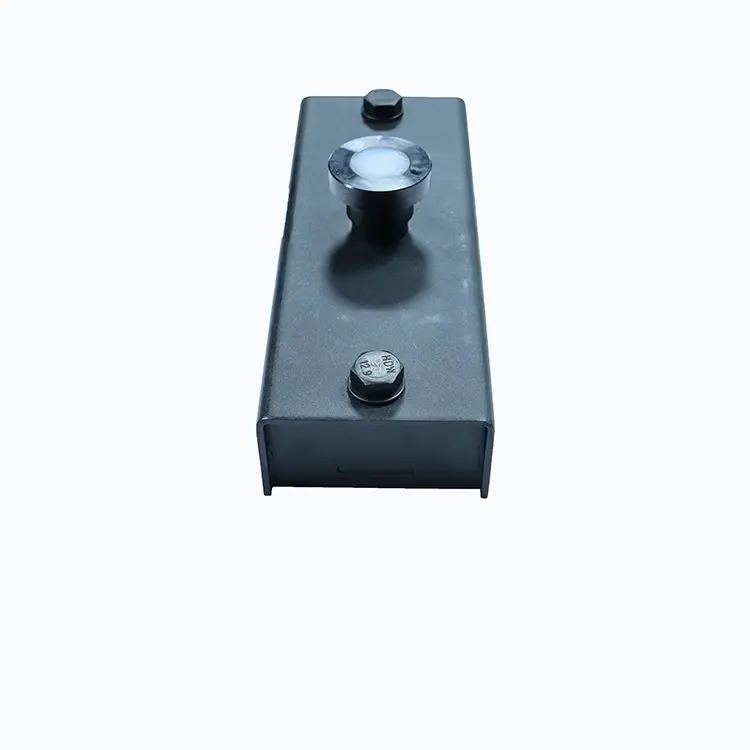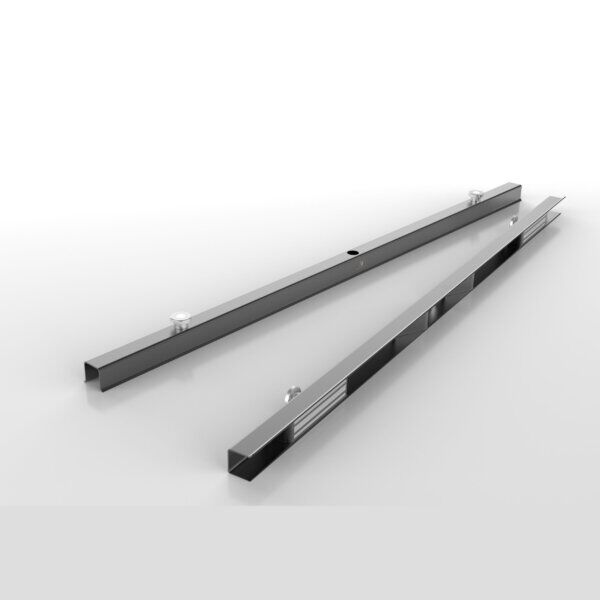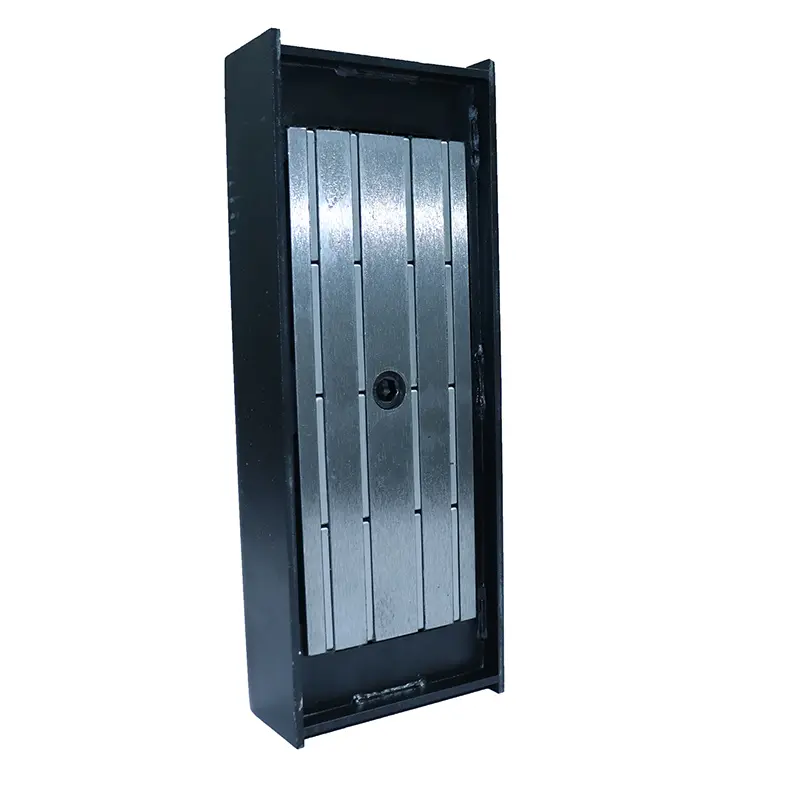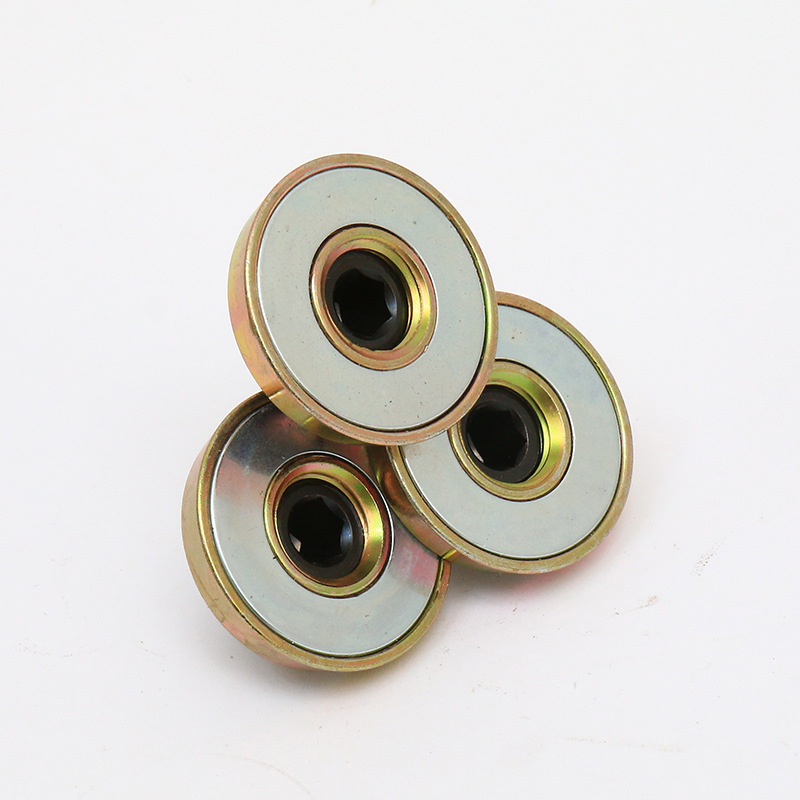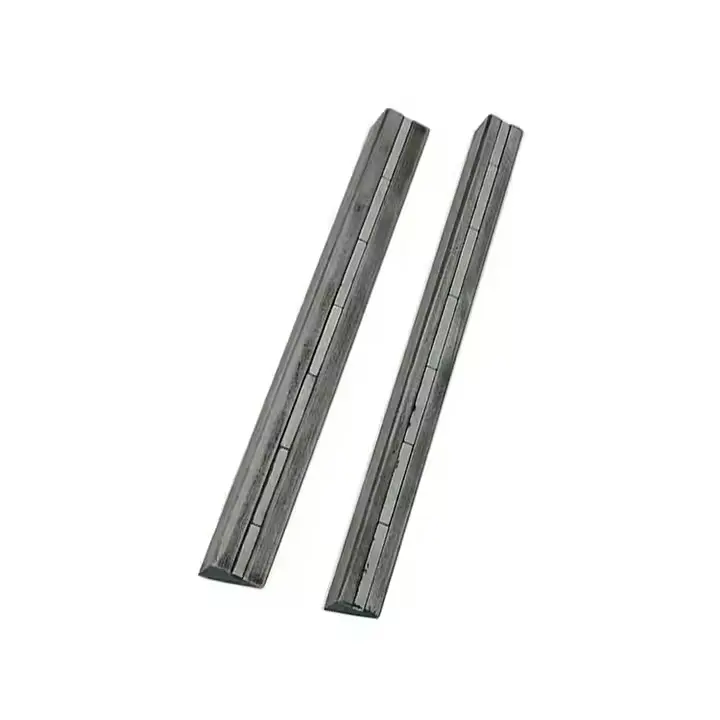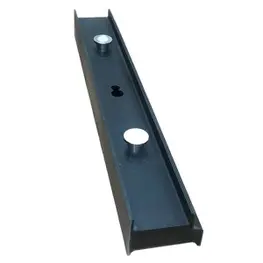Precast Shuttering Magnets with Carbon Steel Housing
product detail
Precast shuttering magnets, also known as precast concrete magnets, are specialized tools used in the construction industry to secure and position formwork during the pouring of precast concrete elements. They have significantly transformed traditional construction methods by offering a more efficient, safer, and user-friendly alternative to mechanical fastening systems like screws or bolts.
Key Features of Precast Shuttering Magnets
|
|
|||||||
|
Model |
L(mm) |
L1(mm) |
W(mm) |
h(mm) |
M |
Breakaway(lbs) |
Breakaway(kg) |
|
QCM450 |
170 |
135 |
60 |
43 |
M12*30 |
1000 |
450 |
|
QCM600 |
170 |
142 |
60 |
43 |
M12*30 |
1300 |
600 |
|
QCM900 |
280 |
244 |
60 |
43 |
M12*30 |
2000 |
900 |
|
QCM1600 |
290 |
240 |
120 |
60 |
M16*30 |
3500 |
1600 |
|
QCM1800 |
320 |
270 |
120 |
60 |
M16*30 |
4000 |
1800 |
|
QCM2100 |
320 |
270 |
120 |
60 |
M16*30 |
4600 |
2100 |
|
QCM2400 |
320 |
270 |
120 |
60 |
M16*30 |
5300 |
2400 |
- Easy to operate: The switch mechanism of the prefabricated formwork magnet design makes it quick to activate and release the magnetic force. Workers can place the magnet in the position to be fixed, and gently tap the button with a wooden hammer or rubber hammer to activate the magnet. The magnetic force can be easily released with a special crowbar.
- Compact design: The NdFeB magnet is encapsulated in a steel casing. This compact appearance design makes it flexible. The largest model weighs only 7800g, and workers can easily twist it up and move it.
- Durability and maintenance: The steel casing protects the magnet from moisture or corrosion, and the small welds avoid the risk of the magnet being intruded by concrete or debris. Regular cleaning of the magnetic surface contributes to the durability and long-term reliability of the magnet.
Applications
Precast shuttering magnets are widely used in:
- Precast concrete production: for fast fixing of double-sided formwork for wall panels to ensure uniform thickness during concrete pouring. Magnets simplify the formwork assembly process when mass-producing standardized room modules in factories.
- Construction sites: for fast fixing of formwork for bridge piers and beams to resist lateral pressure of concrete.
- Industrial manufacturing: for efficient fixing of large-section column formwork to meet the needs of high-frequency and large-scale production. Ensure precise alignment of sandwich insulation layers (such as polyurethane) with the concrete surface layer.
Application of precast shuttering magnets
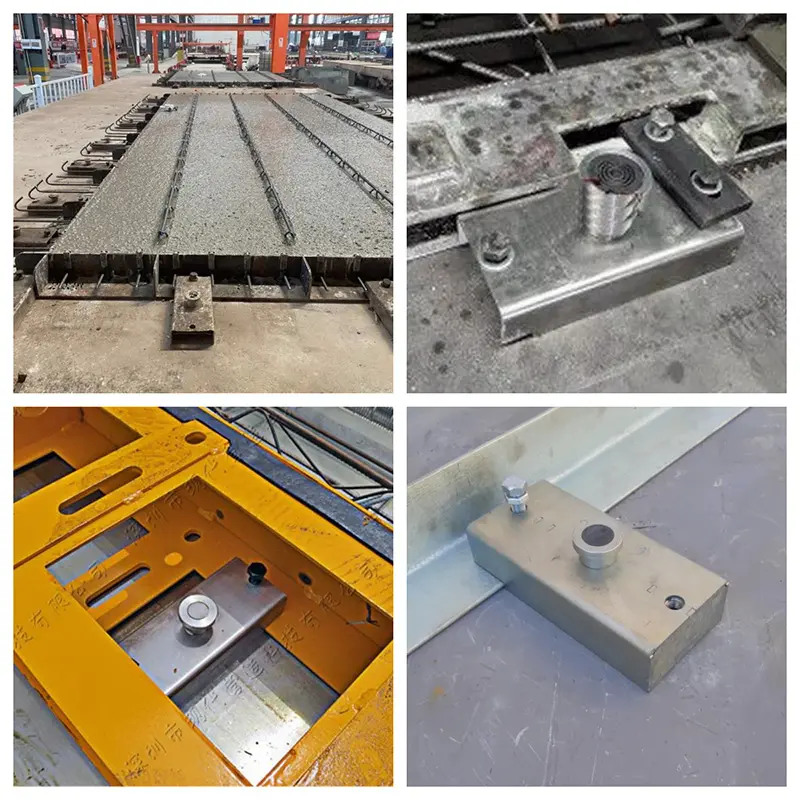
Advantages Over Traditional Methods
- Improved efficiency: Traditional fixed formwork requires drilling, alignment, and tightening, and a single formwork takes an average of 30 minutes. In addition, welding is a high-temperature operation that requires protection, and it is easy to deform after cooling, with a high rework rate. Magnet adsorption does not require physical connection, and the fixing time of a single formwork can be shortened to 2-5 minutes (efficiency increased by more than 80%). After a prefabrication plant in Germany adopted NdFeB magnets, the daily formwork turnover rate increased from 3 times to 8 times, and the production capacity doubled.
- Enhanced safety: Traditional fixed formwork is prone to bolt loosening and welding point breakage, which may cause the formwork to collapse (accounting for 12% of construction site accidents, according to OSHA data). Magnets can evenly bear force, and the magnetic force distribution covers the entire contact surface without local stress concentration. After a tunnel project in Australia switched to magnets, the formwork-related accident rate dropped by 90%.
- Cost-effectiveness: Traditional fixed formwork methods are prone to tool loss, and the maintenance cost of equipment such as drill bits and welding guns is high. It can also cause formwork damage, and drilling shortens the life of the formwork by 30%-50%, and the reuse rate is low. The magnetic solution can almost damage the template without drilling or welding, and the template life can be extended to more than 1,000 cycles. The magnet solution also saves labor costs. Statistics from a project in Singapore show that magnets reduce the labor demand for fixed processes by 50%. Calculated over a 10-year period, the comprehensive cost of magnets is 40% lower than that of traditional methods (data source: ACI Journal).
- Precision control: Traditional methods of fixing templates are prone to bolt hole deviations, welding thermal deformation, etc., and the cumulative error is often more than ±5mm. Precast concrete magnets can automatically align, and magnetic adsorption allows the template to fit naturally with the steel frame, and the error can be controlled within ±1mm.
- Environmental protection and sustainability: Traditional fixed templates cause welding smoke and metal debris pollution, and the cost of drilling waste slag treatment is high. The NdFeB magnet solution is more environmentally friendly and green. The use of magnets is basically zero-emission, without thermal processing or chemical bonding, and meets LEED certification requirements. The magnet life is more than 10 years, and it can be recycled after scrapping (the recycling rate of NdFeB exceeds 95%), which promotes a virtuous cycle of materials.
QCM magnet precast concrete magnets production equipment
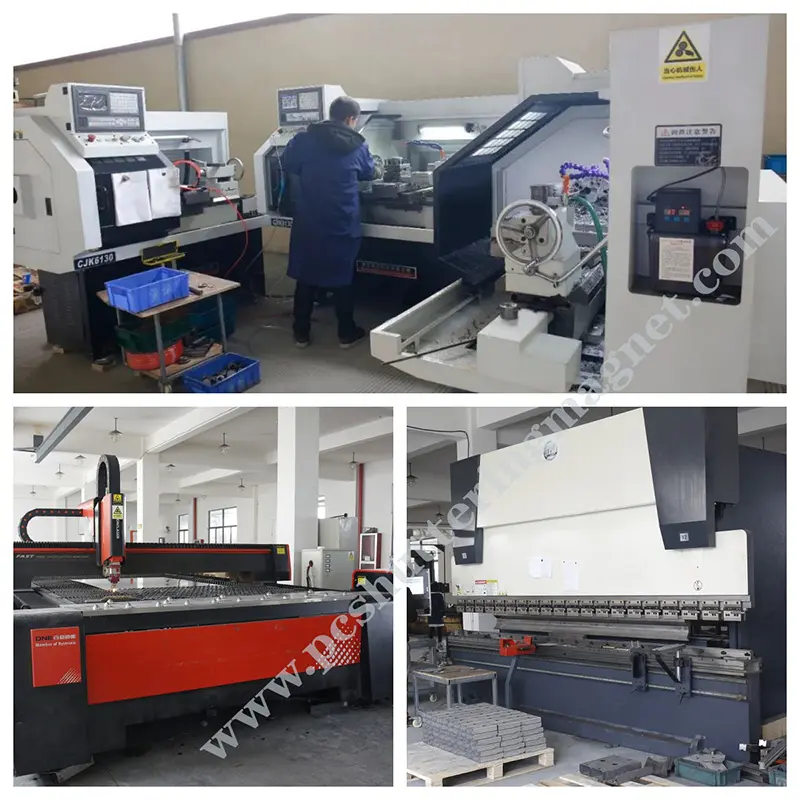
QCM magnet precast concrete magnets test equipment
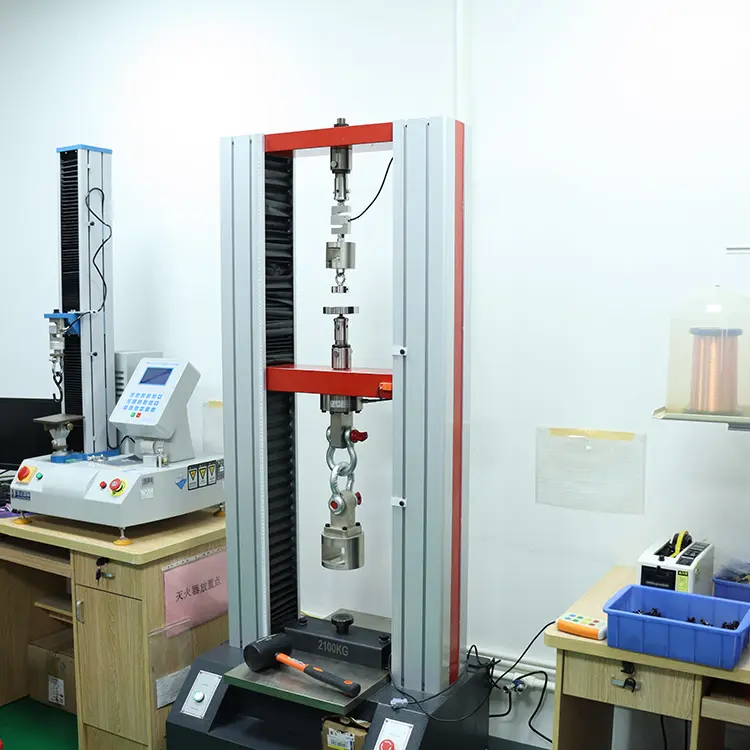
Our factory


